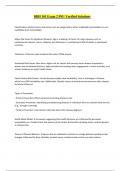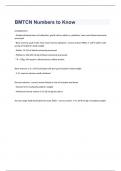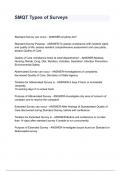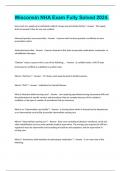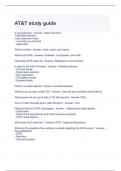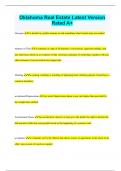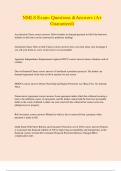Exam (elaborations)
BBH 101 Exam 2 PSU Verified Solutions
- Course
- Institution
BBH 101 Exam 2 PSU Verified Solutions Classifications of Risk Factors: Risk factors can be categorized as either modifiable (controllable) or non modifiable (non-controllable). Major Risk Factor for Significant Diseases: Age is a leading risk factor for major diseases such as cardiovascular ...
[Show more]
